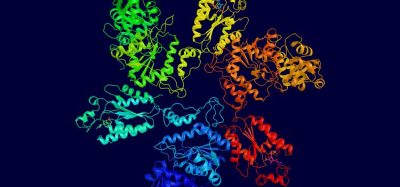Digitalisation and PAT: current landscape and future trends
Posted: 23 November 2023 | Catherine Eckford (European Pharmaceutical Review) | No comments yet
In this exclusive interview from CPHI 2023, Mohamed Noor, Digitalization Manager at the National Institute for Bioprocessing Research and Training (NIBRT), explores the trends, challenges and opportunities that digitalisation and process analytical technology (PAT) have within the biopharmaceutical industry.


Last month at CPHI Barcelona 2023, EPR interviewed Mohamed Noor, Digitalization Manager at the National Institute for Bioprocessing Research and Training (NIBRT). During the conversation, Noor shed light on how digitalisation is impacting the biopharmaceutical industry. Additionally, he explored the trends, challenges and opportunities for process analytical technology (PAT). On numerous occasions, he emphasised the importance of being aware of the key differences when applying PAT in the process development lab versus commercial manufacturing.
When asked to predict what major trends in digitalisation could impact pharma in the next few years, Noor responded: “If you look at the traditional biologics and monoclonal antibodies that have been platformised for a while, everyone is purifying the protein in a similar way. But when it comes to cell and gene therapies (CGTs), they are a bit fragmented, there is no platform approach. So, if you are trying to apply digital tools that you think that may be successful using traditional monoclonal antibodies, it may or may not work as well in trying to put it in the CGT space.”
He continued, stating that with there being many different options, Noor referred to the development of antibody therapeutics as “mature cell gene therapy.” He added: “Sometimes other therapy works better. Sometimes gene therapy works better.” As such, he considered this an exciting area.
Technology development
Noor also considered that using generative AI to prove a drug’s efficacy inside patients is a big challenge. He urged the industry to explore how the technology can be applied across the entire biopharma pipeline.
In terms of technology development, an application that Noor finds exciting is mobile sensors. These can provide real-time data during the bioreactor process, he elaborated. Some applications being developed offer 3D data, so they can be correlated with computational methods. Interestingly, “you are experimentally validating what your theoretical culture is not telling you.”
Utilising process analytical technologies (PAT) effectively
While PAT has been around for maybe 15 years or so, it is slowly making its way into commercial good manufacturing practice (GMP) manufacturing, Noor explained.
As for the current challenges of these technologies, Noor was optimistic. He highlighted that although there are many, they are “not really difficult to overcome”.
Approach is key… we have to think about the end goal first and then go to do all the development work in the lab”
Approach is key, he asserted: “we have to think about the end goal first and then go to do all the development work in the lab.” Noor stated that normally, while PATs are tested experimentally initially, they are applied to GMP commercial manufacturing prematurely. This approach brings to light that there is “a huge amount of regulatory work” required. As an example, he shared that perhaps the work done in development was not GMP, so questions such as where the data is stored and who made the models for the PAT analysis arise.
Noor emphasised that many companies will just use PAT for monitoring, “but are not able to take actions from the data that they take.” To illustrate this, he shared several examples, for instance, when the pH is indicating it is a low pH. He then questioned how a company decides to proceed in these cases. Noor stated that the process of close monitoring must be clearly defined: “what does it mean closely monitor?”
Factors to consider
He recommended working backwards and considering relevant factors as well as what work needs to be done, such as:
- Extractables and leachables
- What material is the reactor made from, eg, plastic?
- How does it affect cell culture?
- After collecting data in a process development lab and scale up is the next, appropriate option, what are the aspect ratios or gassing strategies?
Ultimately, Noor advised to “just collect data for a while [to see] if it is going to make sense.” Once this data collection is complete, start the next steps slowly. He highlighted that return on investment is an important factor to consider too.
Scale up challenges
At present, “there is a huge problem [in] scaling up and making sure that all relevant factors such as the volumes are representative,” he continued.
A big challenge is navigating variability. For instance, in process development lab, which is small scale, this is quite different than what you have in commercial manufacturing, Noor explained.
Addressing the issue
“if you look at the publications that have come out from industrial players, what we have seen is continuous improvement in the PAT technologies rather than anything that is really a breakthrough in terms of the process in a bioreactor”
Noor shared his perspective on what is being done to address this. “What I have seen so far from industrial labs is a bit of a mismatch between what is coming from academic labs. In academia, maybe they are not really representative of what commercial manufacturing looks like, but if you look at the publications that have come out from industrial players, what we have seen is continuous improvement in the PAT technologies rather than anything that is really a breakthrough in terms of the process in a bioreactor.”
He considered the biggest point is how a decision is made in real time. As it can be difficult to be sure of what next step to take, “due to having multiple options, you have to do a proper design of experiment to figure out if you can capture all the possible pathways and the impacts of each decision in the following days and months. So, that is a big opportunity, but I think being in an adaptive environment, it is not something that anyone has been looking at seriously.”
“For example, if you are in ultra rare or rare diseases, you may be making one or two or three batches a year, then trying to spend a couple of million euros or dollars on PAT might not give you the return on investment”. Compared to the production of a PD-1 inhibitor, perhaps this will total 25, 30 batches per year, he added. “That is a huge savings that you could get. So, it really depends on what are you making.”
Harnessing digitalisation and PAT for the future
Overall, Noor highlighted there is great opportunity in harnessing digitalisation and PAT in the biopharmaceutical industry. However, there continues to be challenges, so appropriate data collection and processing as well as regulatory knowledge, alongside other important elements, can help industry players to effectively implement these valuable technologies.
Related topics
Big Data, Biopharmaceuticals, Continuous Manufacturing, Data Analysis, Drug Manufacturing, Manufacturing, Process Analytical Technologies (PAT), Research & Development (R&D), Technology, Therapeutics
Related organisations
CPhI, National Institute for Bioprocessing Research and Training (NIBRT)









